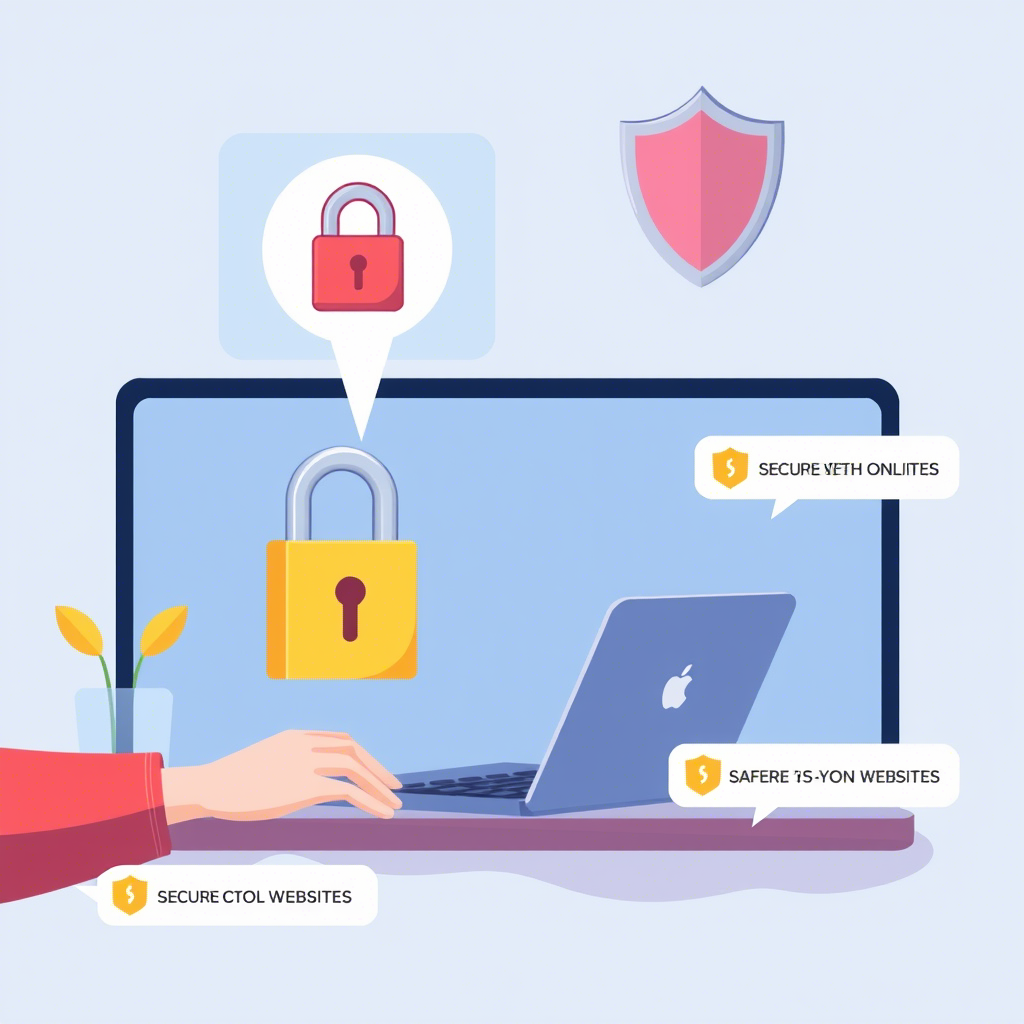Imagine this: you’re sitting at home, browsing your favorite online store, picking out the perfect gift for a friend. With just a few clicks, you’ve completed your purchase—convenient, right? But what if I told you that behind that simple transaction lies a hidden danger many of us overlook?
Every day, millions of people shop online without giving much thought to how secure their personal information really is. In 2023 alone, identity theft affected over 42 million Americans, with online shopping fraud being one of the top contributors. As we continue to rely more on digital convenience, our identities become increasingly vulnerable to cybercriminals.
That’s why protecting your identity while shopping online isn’t just important—it’s essential. This article will walk you through practical, easy-to-follow strategies to keep your personal data safe and ensure every online purchase you make is secure. From recognizing suspicious websites to understanding two-factor authentication, we’ll cover everything you need to know to shop smart and stay safe in today’s digital world.
Let’s start by looking at one of the most basic—but often overlooked—aspects of online shopping safety: choosing trustworthy websites.
1. Choose Trustworthy Websites: Your First Line of Defense
When it comes to online shopping, not all websites are created equal. Just like you wouldn’t hand your credit card to a stranger on the street, you shouldn’t share your personal and financial details with just any website you stumble upon.
So, how do you tell a legitimate site from a fake one?
Start by checking the URL . Secure websites begin with “https://” instead of just “http://”. That extra “s” stands for secure , meaning the site uses encryption to protect the data you send. Also, look for a padlock icon in the address bar—another sign that the connection is encrypted.
Another red flag? Too-good-to-be-true deals . If a product is being sold at a price that seems unrealistic, it probably is. Scammers often lure victims with deep discounts on popular items, only to steal their information or never deliver the goods.
Also, take a moment to read reviews and check the company’s contact information. Legitimate businesses usually have clear ways to get in touch—like a phone number, physical address, or customer service email. Sites that hide this information or feature an overwhelming number of negative reviews should raise alarms.
Remember, your first step toward protecting your identity starts before you even click “buy.” Being selective about where you shop is one of the simplest yet most powerful defenses against online fraud.
2. Use Strong Passwords and Enable Two-Factor Authentication (2FA)
Once you’ve landed on a secure site, the next step in protecting your identity is securing your account itself. Think of your password as the key to your front door—if it’s weak or reused across multiple sites, it becomes much easier for someone to break in.
Avoid using obvious passwords like “123456”, “password”, or your birthday. Instead, create strong, unique passwords for each of your online accounts. A good password includes a mix of uppercase and lowercase letters, numbers, and special characters. For example, something like PurpleTiger$RunsFast42! is far more secure than qwerty.
Even better? Use a password manager . Tools like Bitwarden, Dashlane, or 1Password generate and store complex passwords for you, so you don’t have to remember them all.
But passwords alone aren’t enough. That’s where Two-Factor Authentication (2FA) comes in. 2FA adds an extra layer of security by requiring a second form of verification—like a code sent to your phone or generated by an authenticator app—before granting access to your account.
Many major retailers and payment platforms like Amazon, PayPal, and Apple offer 2FA options. Enabling it might take just a minute, but it can prevent hackers from accessing your account even if they somehow obtain your password.
By combining strong passwords with 2FA, you’re essentially locking your online shopping accounts with not just one key, but two separate locks—making it exponentially harder for anyone to break in.
3. Avoid Public Wi-Fi for Sensitive Transactions
You’re waiting at a coffee shop, sipping your latte, and decide to quickly order those shoes you’ve been eyeing. The free Wi-Fi is fast and convenient—so why not?
Here’s the problem: public Wi-Fi networks are rarely secure . Hackers love them because they provide easy access to unencrypted data flowing between devices and the internet. That means if you log into your shopping account or enter your credit card info on public Wi-Fi, a nearby attacker could potentially intercept that information.
Think of public Wi-Fi like a crowded room where everyone can hear your conversations. You wouldn’t discuss your bank details out loud in such a setting, right? The same logic applies online.
Instead of risking your data, wait until you’re on a secure, private network —like your home Wi-Fi or mobile data plan—to complete any purchases or log into sensitive accounts.
If you absolutely must use public Wi-Fi for browsing, avoid entering personal or financial information. And consider using a Virtual Private Network (VPN) , which encrypts your internet traffic and hides your activity from prying eyes. Many affordable or even free VPN services exist, such as NordVPN, ExpressVPN, or ProtonVPN.
Taking this small precaution can go a long way in keeping your identity safe, especially when you’re on the go.

4. Monitor Your Accounts and Credit Reports Regularly
Even if you follow all the best practices, mistakes can happen. Maybe you accidentally clicked on a phishing link, or a trusted retailer suffered a data breach. That’s why staying proactive and regularly monitoring your accounts is crucial.
Set up account alerts whenever possible. Most banks and credit card companies allow you to receive real-time notifications for every transaction, no matter how small. These alerts can help you spot unauthorized charges immediately.
Additionally, review your bank and credit card statements at least once a week. Look for unfamiliar transactions or subscriptions you didn’t authorize. If you notice anything suspicious, report it to your bank or card issuer right away.
Beyond individual accounts, it’s also wise to monitor your credit reports . You’re entitled to one free credit report per year from each of the three major credit bureaus—Equifax, Experian, and TransUnion—through AnnualCreditReport.com . Review these reports for any new accounts opened in your name that you didn’t authorize.
Some people also opt for credit monitoring services , which alert you to changes in your credit file and can detect signs of identity theft early. Services like LifeLock, Credit Karma, or Experian offer varying levels of protection, some for free.
By staying vigilant and reviewing your financial activity regularly, you give yourself the best chance to catch identity theft early—and minimize its impact.
5. Use Secure Payment Methods and Avoid Storing Card Info
The way you pay online can also significantly affect your identity security. Not all payment methods are created equal, and choosing the right one can be the difference between a safe transaction and a stolen identity.
For starters, avoid saving your credit card information on shopping websites unless absolutely necessary. While it may seem convenient to “remember my card,” doing so increases your risk if the site ever experiences a data breach.
Instead, consider using one-time virtual cards or digital wallets like Apple Pay, Google Pay, or PayPal. These services act as intermediaries between your actual card and the merchant, so your real card number is never exposed during the transaction. Plus, many of them come with additional layers of security, like biometric authentication or transaction confirmations via push notifications.
If you prefer using credit cards directly, choose ones that offer zero liability protection and purchase insurance . Major credit cards like Visa, Mastercard, and American Express typically offer robust fraud protection, making them safer than debit cards—which pull funds directly from your bank account.
Also, be cautious with gift cards and prepaid cards . While they can limit your exposure, they often lack the same consumer protections as credit cards and may be harder to dispute fraudulent charges.
Ultimately, being mindful of how you pay online gives you greater control over your financial information and reduces the chances of identity theft.
Conclusion: Stay Smart, Stay Safe
Protecting your identity while shopping online doesn’t require advanced technical skills or expensive tools. It simply takes awareness, caution, and a few smart habits. From choosing trustworthy websites and using strong passwords to avoiding public Wi-Fi and monitoring your accounts regularly—you now have a solid toolkit to safeguard your personal information.
In a world where convenience often overshadows caution, taking these steps can make all the difference. Remember, identity theft isn’t just a distant threat—it affects real people every single day. By being proactive, you’re not just protecting your money; you’re protecting your peace of mind.
So next time you’re about to click “Buy Now,” pause for a moment. Ask yourself: Am I doing everything I can to stay safe? If the answer is yes, then you’re ready to shop with confidence.
And if you found this guide helpful, feel free to share it with friends and family. After all, knowledge is power—and the more people who understand how to protect themselves, the safer we all are online.
What’s one thing you’ll start doing differently the next time you shop online? Let us know in the comments below!

Marcos Vinicius is a passionate content writer and creator with a strong focus on digital communication. With experience in crafting compelling texts for various platforms, he specializes in creating engaging and strategic content that resonates with audiences. Whether through articles, social media posts, or marketing copy, Marcos combines creativity with precision to deliver impactful messages. Committed to continuous learning and innovation, he stays up-to-date with the latest trends in content creation and digital storytelling.